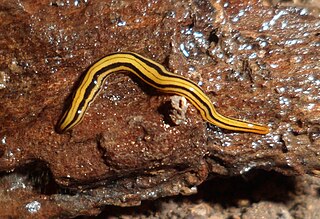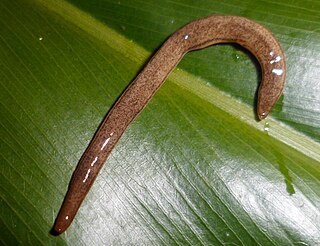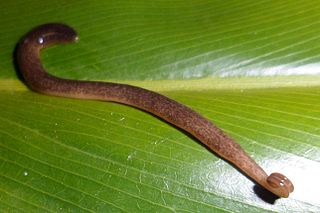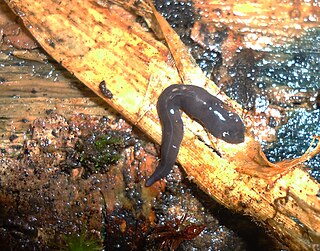
Geoplanidae is a family of flatworms known commonly as land planarians or land flatworms.

Microplana is a genus of land planarians found in Europe and Africa.

Geoplaninae is a subfamily of land planarians endemic to the Neotropical region. Members of this family are sometimes referred to as the Neotropical land planarians. However, one species, Obama nungara has been introduced in Europe.

Luteostriata is a genus of land planarians from Brazil characterized by a yellow body with dark longitudinal stripes.

Obama is a genus of land planarians from South America. It contains several species adapted to human-disturbed environments, including the only invasive land planarian native to the Neotropical realm, Obama nungara, which has been accidentally introduced in Europe.

The reproductive system of planarians is broadly similar among different families, although the associated structures can vary in complexity.

Supramontana is a genus of land planarians from South America.

Choeradoplana is a genus of land planarians found in South America.

Paraba is a genus of land planarians from South America.

Cratera is a genus of land planarians found in South America.

Notogynaphallia is a genus of land planarians from South America.

Caenoplanini is a tribe of land planarians in the subfamily Rhynchodeminae mostly found throughout the Australasian and Oceanian realms.

Xerapoa is a genus of land planarians from Brazil.

Amaga is a genus of land planarians from South America.

Bogga is a genus of land planarians from South America. It is monotypic, being represented by the single species, Bogga bogotensis, which occurs in Bogotá, Colombia.
Gigantea is a genus of land planarians from the Neotropical realm.

Imbira guaiana is a species of land planarian in the subfamily Geoplaninae. It is the type species of the genus Imbira and is found in Brazil.
Gusana is a genus of land planarians found in Chile.
Timyma is a genus of land planarians from Chile. It is the sole genus of the subfamily Timyminae.

Geoplanini is a tribe of land planarians in the subfamily Geoplaninae.















